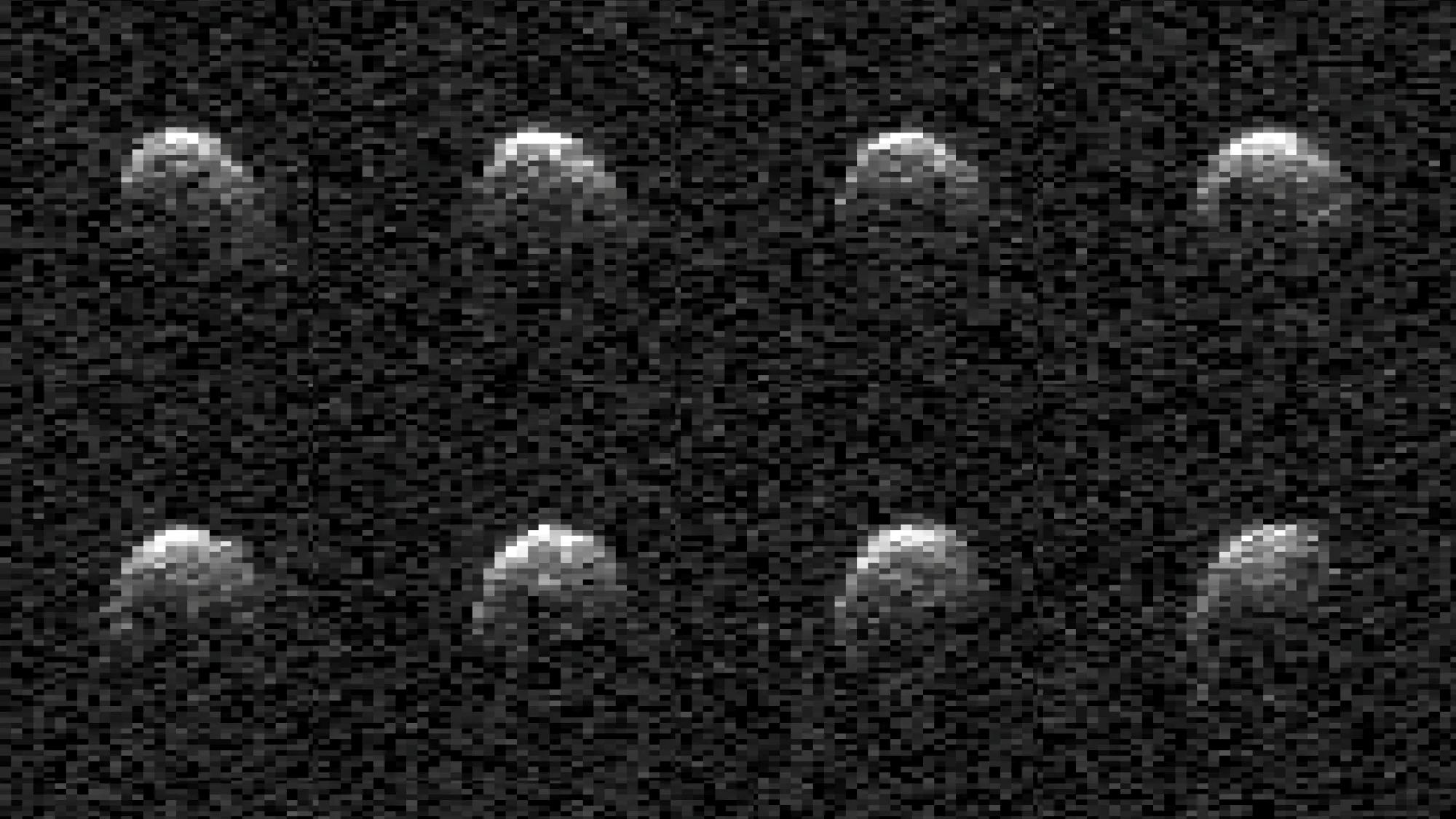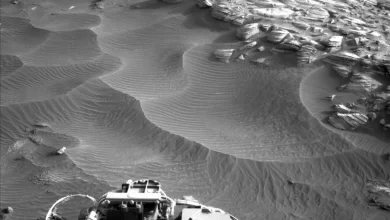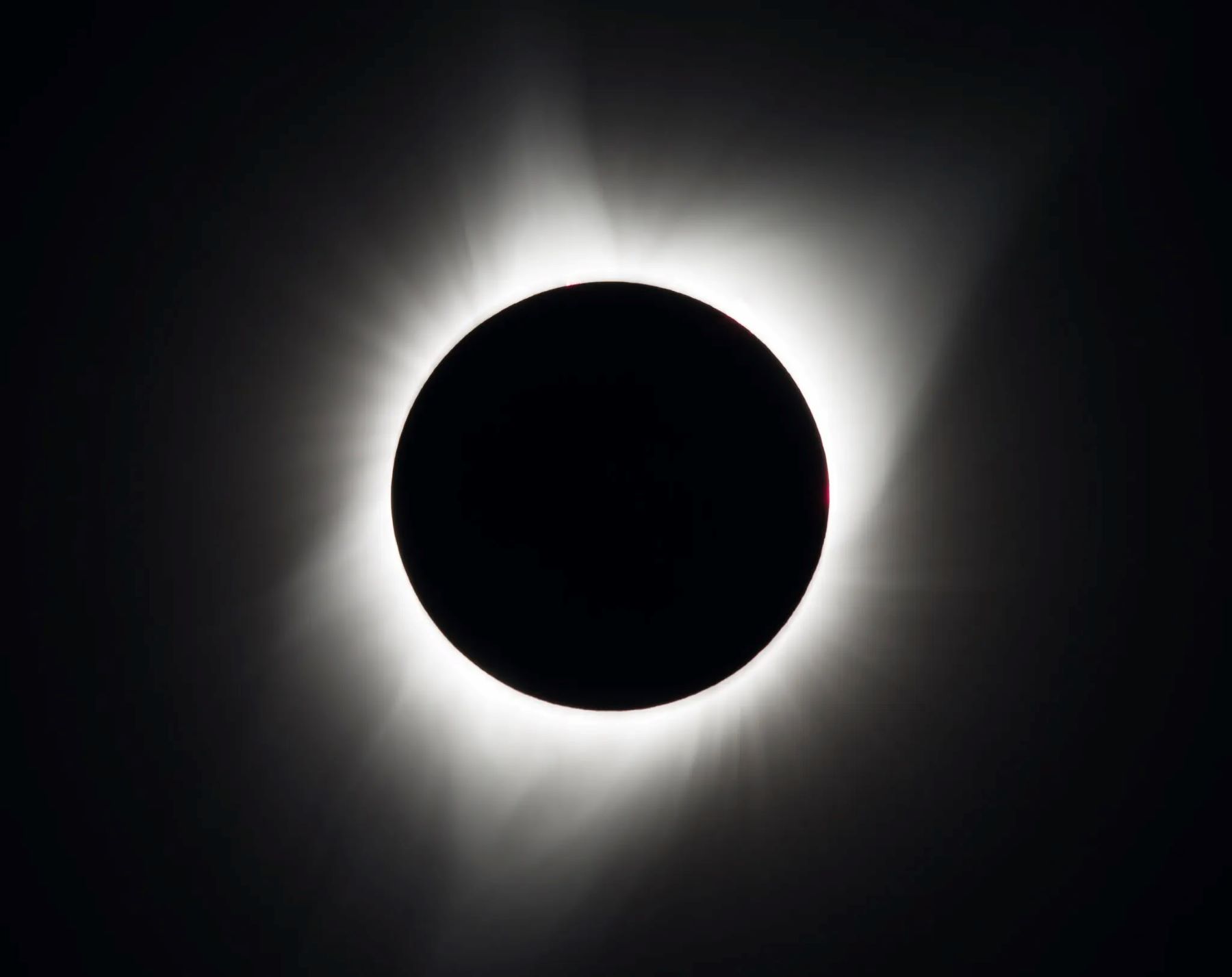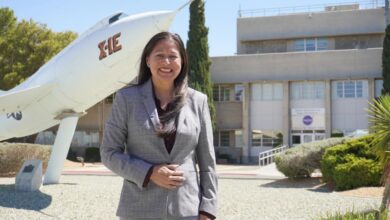NASA’s Planetary Radar Images Slowly Spinning Asteroid

During the close approach of 2008 OS7 with Earth on Feb. 2, the agency’s Deep Space Network planetary radar gathered the first detailed images of the stadium-size asteroid.
On Feb. 2, a large asteroid safely drifted past Earth at a distance of about 1.8 million miles (2.9 million kilometers, or 7 ½ times the distance between Earth and the Moon). There was no risk of the asteroid – called 2008 OS7 – impacting our planet, but scientists at NASA’s Jet Propulsion Laboratory in Southern California used a powerful radio antenna to better determine the size, rotation, shape, and surface details of this near-Earth object (NEO). Until this close approach, asteroid 2008 OS7 had been too far from Earth for planetary radar systems to image it.
The asteroid was discovered on July 30, 2008, during routine search operations for NEOs by the NASA-funded Catalina Sky Survey, which is headquartered at the University of Arizona in Tucson. After discovery, observations of the amount of light reflected from the asteroid’s surface revealed that it was roughly between 650 to 1,640 feet (200 and 500 meters) wide and that it is comparatively slow rotating, completing one rotation every 29 ½ hours.
The rotational period of 2008 OS7 was determined by Petr Pravec, at the Astronomical Institute of the Czech Academy of Sciences in Ondřejov, Czech Republic, who observed the asteroid’s light curve – or how the brightness of the object changes over time. As the asteroid spins, variations in its shape change the brightness of reflected light astronomers see, and those changes are recorded to understand the period of the asteroid’s rotation.
During the Feb. 2 close approach, JPL’s radar group used the powerful 230-foot (70-meter) Goldstone Solar System Radar antenna dish at the Deep Space Network’s facility near Barstow, California, to image the asteroid. What scientists found was that its surface has a mix of rounded and more angular regions with a small concavity. They also found the asteroid is smaller than previously estimated – about 500 to 650 feet (150 to 200 meters) wide – and confirmed its uncommonly slow rotation.
The Goldstone radar observations also provided key measurements of the asteroid’s distance from Earth as it passed by. Those measurements can help scientists at NASA’s Center for Near Earth Object Studies (CNEOS) refine calculations of the asteroid’s orbital path around the Sun. Asteroid 2008 OS7 orbits the Sun once every 2.6 years, traveling from within the orbit of Venus and past the orbit of Mars at its farthest point.
CNEOS, which is managed by JPL, calculates every known NEO orbit to provide assessments of potential impact hazards. Due to the proximity of its orbit to that of the Earth and its size, 2008 OS7 is classified as a potentially hazardous asteroid, but the Feb. 2 close approach is the nearest it will come to our planet for at least 200 years.
While NASA reports on NEOs of all sizes, the agency has been tasked by Congress with detecting and tracking objects 460 feet (140 meters) in size and larger that could cause significant damage on the ground if they should impact our planet.
The Goldstone Solar System Radar Group and CNEOS are supported by NASA’s Near-Earth Object Observations Program within the Planetary Defense Coordination Office at the agency’s headquarters in Washington. The Deep Space Network receives programmatic oversight from Space Communications and Navigation (SCaN) program office within the Space Operations Mission Directorate, also at the agency’s headquarters.
More information about planetary radar, CNEOS, and near-Earth objects can be found at:
https://www.jpl.nasa.gov/asteroid-watch
NASA’s Planetary Radar Captures Detailed View of Oblong Asteroid
Teachable Moment: How to Explore an Asteroid
Planetary Defense Exercise Uses Apophis as Hazardous Asteroid Stand-In





